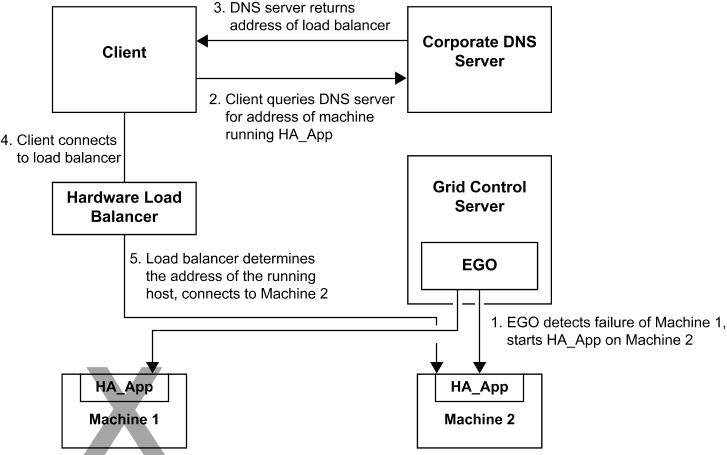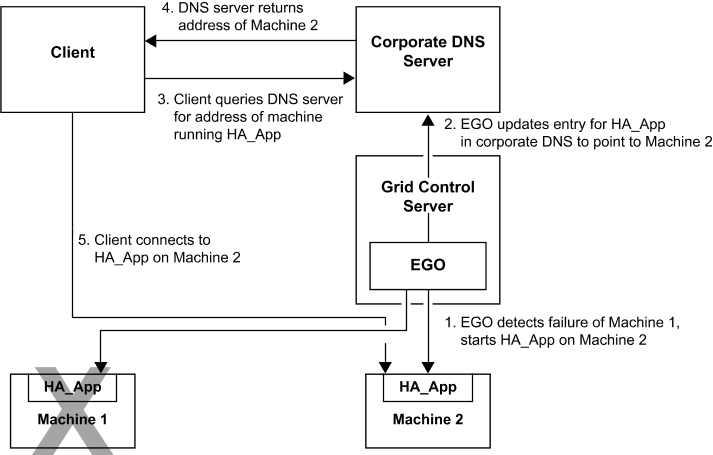Setting Up High Availability for Critical Applications
On a grid, there are
certain services that always need to be available and accessible to
clients. These services are vital to the applications running on the
grid and its ability to process SAS jobs. Examples include:
To provide business
continuity for the application, a failover host must be provided for
the critical services running in the grid environment. This provides
an alternative location for running the critical services and ensures
that it remains available to the applications on the grid. In addition,
both the main and failover machines must have access to a shared file
server. This ensures that the application has access to the data required
for operation, regardless of which machine is running the service.
To provide business
continuity for the application, the failover capability must also
be automatic. EGO is configured to monitor any number of critical
services running on the grid. If it detects that the application has
failed or that the machine running it has gone down, it is configured
to start the application on the failover server automatically, which
enables applications to continue running on the grid.
However, once the application
has started on the failover server, the client must have a way to
know which server is running the application. There are two methods
for accomplishing this:
-
Using a hardware load balancer. The load balancer serves as an intermediary between the client and the services running on the grid, which decouples the grid operation from the physical structure of the grid. When the client wants to connect to the service, it connects to the load balancer, which then directs the request to the machine that is running the service. The load balancer knows the addresses of both the main and failover machines, so it passes the request on to whichever of the machines is running in the servers. During normal operation, the request goes to the main machine. When failover occurs, EGO starts services on the failover host, and the load balancer forwards connections to it (because it is not the host running the services).
-
DNS resolution. Once EGO starts the application on the failover server, it sends the address of the failover machine to the corporate DNS server. The entry for the application is updated in the server, so the next time a client requests a connection to the application, the DNS server returns the address of the failover machine.
The choice of whether
to use a load balancer or a DNS solution depends on your organization’s
policies. Using DNS resolution prevents you from having to purchase
an addition piece of hardware (the load balancer). However, your organization’s
policies might prohibit either the corporate DNS from being changed
by an outside DNS (EGO) or DNS requests to be forwarded to an outside
DNS. If this is the case, the hardware load balancer provides a high-availability
solution.
Copyright © SAS Institute Inc. All rights reserved.


